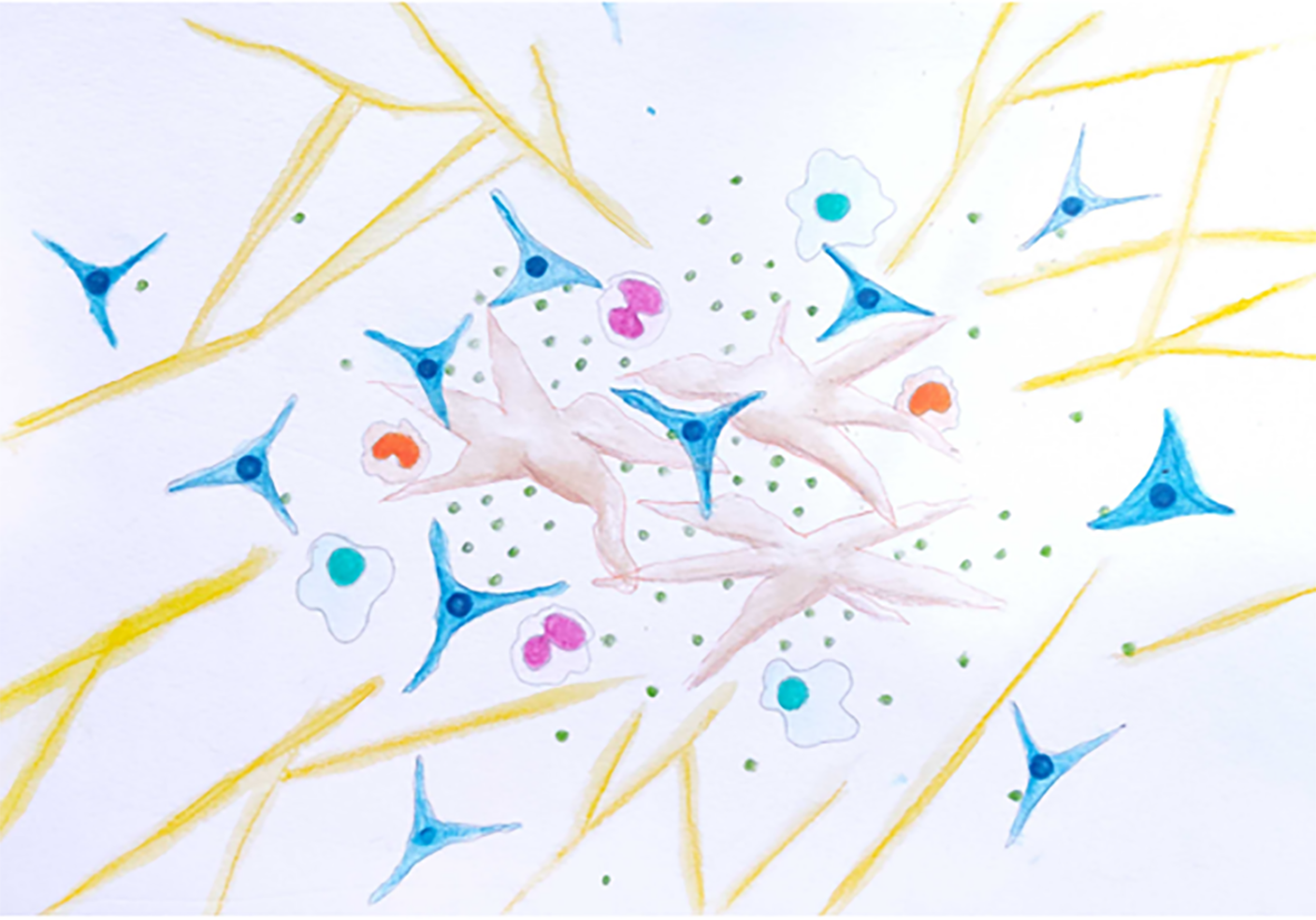Copyright
©The Author(s) 2021.
World J Stem Cells. Feb 26, 2021; 13(2): 155-167
Published online Feb 26, 2021. doi: 10.4252/wjsc.v13.i2.155
Published online Feb 26, 2021. doi: 10.4252/wjsc.v13.i2.155
Figure 1 Cell and platelet interactions in platelet-rich plasma-bone marrow aspirate concentrate milieu.
Monocytes contained in bone marrow aspirate concentrate are further stimulated in the presence of platelet-rich plasma. Macrophage (MΦ) 1 is characterized by inflammatory cytokine secretion (interferon-γ) and nitric oxide production, resulting in an effective pathogen killing mechanism. The MΦ1 phenotype also produces vascular endothelial growth factor and fibroblast growth factor. The MΦ2 phenotype consists of anti-inflammatory cells with a high phagocytosis capacity. MΦ2 produces extracellular matrix components, angiogenic and chemotactic factors, and interleukin-10. In addition to pathogen defense, MΦ2 can alleviate the inflammatory response and promote tissue repair. Orange: Monocyte; Dark purple: Neutrophil; Light blue: Macrophage; Dark blue: Mesenchymal stem cells; Light purple: Activated platelets; Green: Growth factors; Dark yellow: Fibrin fibers.
- Citation: Lana JFSD, da Fonseca LF, Macedo RDR, Mosaner T, Murrell W, Kumar A, Purita J, de Andrade MAP. Platelet-rich plasma vs bone marrow aspirate concentrate: An overview of mechanisms of action and orthobiologic synergistic effects. World J Stem Cells 2021; 13(2): 155-167
- URL: https://www.wjgnet.com/1948-0210/full/v13/i2/155.htm
- DOI: https://dx.doi.org/10.4252/wjsc.v13.i2.155













